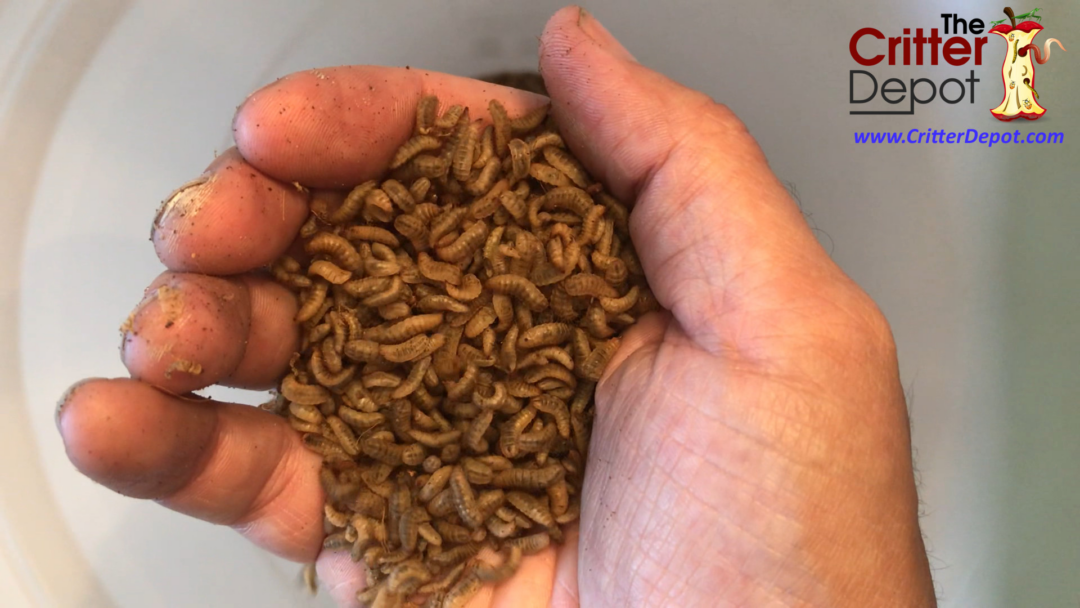How to Start an Indoor Composting Bin
Composting is a great way to turn your kitchen scraps into nutrient-rich soil. But one undesired by-product of composting is the odor that comes from the decomposition of organic materials by microbes, which release gasses such as ammonia and sulfur as they break down food scraps. This process can make a backyard compost pile very pungent. And during colder months, outdoor composting slows down, or worse—freezes altogether, which completely stops the process.
If you’d like to keep composting during the winter months, so that you have an abundance of rich material for your gardens, you’ll need to bring composting indoors. But how can you prevent that rotting smell from entering your home? Add black soldier fly larvae (grubs) to the compost. These grubs will break down the material and create nutrient dense frass (excrement) that can be used for fertilizer.
Why Black Soldier Fly Larvae Are a Game Changer
So, what makes black soldier fly larvae (BSFL) so exceptional for indoor composting? First, these grubs don’t just nibble at waste—they devour it. Unlike the slow, steady pace of red worms, black soldier fly larvae can consume huge quantities of organic matter at a rapid pace, preventing the typical rotting process that leads to foul odors. This makes them an ideal solution for indoor composting, where a climate-controlled environment is necessary but without the odor.
Let’s break down how to set up an odorless, efficient indoor compost with these amazing creatures.
Setting Up the Perfect Habitat for Grubs
Grubs need a comfortable habitat. Here’s how to build the perfect habitat for your indoor compost system:
- Choose Your Compost Bin: Select a container that’s well-ventilated. Airflow is crucial, as it keeps the environment balanced between moisture and dryness—too wet, and your grubs could drown. A container with drainage and a sloped bottom helps grubs naturally self-harvest when they’re ready to pupate, making maintenance a breeze.
- Prepare the Bedding: Lay down a base layer of dry, carbon-rich material, such as shredded cardboard, straw, or dried leaves. This absorbs extra moisture and provides a good structure for the waste to sit on.
- Feed the Beast: Start tossing in your food scraps—everything from fruit and veggie peels to meat and dairy. Unlike red worms, which have picky appetites, these grubs will tackle almost anything. Just make sure to chop up larger scraps to help speed up their munching.
- Maintain the Perfect Environment: These grubs like it warm—think tropical. They thrive in temperatures between 77°F and 95°F (25°C to 35°C), so if your home tends to be cooler, consider placing a heating pad underneath the bin. Keep the habitat moist, but not waterlogged; grubs can handle humidity, but standing water is a no-go.
- Introduce Your Grubs: Once the bin is ready, introduce your black soldier fly larvae. You can buy them from specialty suppliers. From here, it’s just a matter of letting them loose on your food waste!
Why Grubs Outperform Red Worms
Now, why choose grubs over the more traditional red worms? This in depth article compares the advantages of black soldier fly larvae over red worms. But here is a summary:
- Speedy Decomposers: Black soldier fly larvae are voracious eaters. While red worms nibble at scraps, grubs can consume up to four times their weight in food daily. This means faster composting and less time for your waste to rot and smell.
- Less Odor: Odor arises when organic material sits and decomposes slowly. Grubs, with their rapid consumption, barely give waste a chance to break down the usual way. That means less ammonia, fewer sulfides, and virtually no unpleasant smells wafting from your indoor compost bin.
- They Eat Nearly Everything: Red worms are limited—they don’t do well with dairy, meat, or oily foods. Grubs, on the other hand, are unfazed by these trickier scraps. They will devour almost anything you add to their bin, including high-protein food scraps that traditional composters shy away from. But be mindful that they cannot consume calcified, organic objects like bones.
- Natural Harvesters: One of the best features of black soldier fly larvae is their natural inclination to migrate when they’re ready to pupate. They’ll crawl to higher ground. This is why you see tubes within many home-made BSFL composting bins – the grubs will crawl up the tube, eventually falling through the other side, making it easy for you to collect them if you want to use them for feeding chickens or fish, or simply let them exit the compost on their own.
These grubs migrate with intent to pupate into their final form – the black soldier fly which is harmless to humans. But it’s likely you don’t want them in your home so at this point, if you don’t have chickens or fish to feed them to, you can discard them outdoors.
Grub Compost vs Traditional Compost
The black soldier fly larvae aren’t just efficient composters—they leave behind a potent by-product called frass. Grub frass is packed with essential nutrients like nitrogen, phosphorus, and potassium, making it a top-tier organic fertilizer. This nutrient-rich excrement is far more concentrated than typical worm castings, and a small amount can go a long way in supercharging your plants. Whether you’re gardening indoors or outdoors, a sprinkle of frass can boost soil health and plant growth.
Conclusion: Grubs Are a Great Way to Bring Composting Indoors
When it comes to composting, black soldier fly larvae are a great way to improve and speed up the process. By using them you can continue composting all year long, regardless of weather. Their ability to quickly break down waste, reduce odors, and tackle a wide variety of organic materials makes them far superior to red worms in almost every way. Plus, the nutrient-packed frass they produce is a bonus for your plants. Composting indoors no longer must mean dealing with slow decomposition or stinky smells—grubs are here to handle it all.

